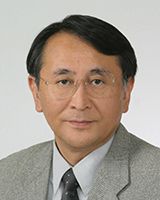Greetings from the Professor

Graduate School of Dental Medicine,
Professor Junichiro Iida
One important objective of dental medicine is to improve quality of life through the recovery of stomatognathic functions lost through illness or disability. These stomatognathic organs, located in the head, not only play an important role in vital functions such as eating, chewing, swallowing, breathing, and pronunciation, but also produce our smile, and are extremely important in forming the harmony in our facial features that help preserve quality of social life. Orthodontic treatment, backed by the study of orthodontics can recover important functions such as alignment and occlusion of impaired teeth through the transfer of teeth or the suppression of jaw growth, etc. and can help obtain facial feature harmony.
In the orthodontics classroom, which is a clinical system classroom, various types of research with the following basic themes are being deployed to further develop orthodontics and orthodontic treatment.
Mechanism elucidation of tissue remodeling phenomena by mechanical stimulation
- Mechanism elucidation of tissue remodeling phenomena by mechanical stimulation
- Development of orthodontic dental materials
- Research regarding stomatognathic functions
- Research regarding jaw disorders
- Research regarding cleft lip and palate
At the same time, we are also carrying out orthodontic clinical training for young dentists learning the specialist techniques of orthodontics. Our orthodontics classroom is a training institution recognized by the Japanese Orthodontic Society, which represents the field in Japan. We provide 2 years (Basic Orthodontic Training) to 5 years (Clinical Orthodontic Training) or more of training as required by the JOS, with all graduate students following this rigorous curriculum. All our department members are involved in daily treatment at the University’s Orthodontics Department. In addition to treatment of general malocclusion such as double teeth, we also play an important role in treating most of Hokkaido’s jaw deformity and cleft palate patients. Our exchanges with overseas universities are frequent, and many of our foreign students have returned home to practice what they learned here.
In order to foster persons of talent who are responsible for the next generation, we aim to train internationally competitive dentists with practical skills through the acquisition of the newest theory and techniques.
2. Education Content
Graduate education Research content
We carry out extensive basic and clinical research regarding examination, diagnosis, and treatment methods in orthodontic dentistry.
Research regarding mechanism elucidation of tissue remodeling phenomena by mechanical stimulation:
Study of tissue remodeling phenomena by mechanical stimulation such as orthodontic force, perioral muscle/soft tissue etc., and related age-related changes. Additionally, biochemical research by providing mechanical stimuli to cultured cells, microvascular research, histological studies using diabetic rats, and joint research in a wide range of themes with Dental Pharmacology, the Oral Function and Anatomy, and the Developmental Biology of Hard Tissue classrooms, etc.
Research regarding stomatognathic functions:
The tongue, lips, and cheeks play an important role in stomatognathic functions such as pronunciation, chewing, and swallowing. Using a device for determining continuous sealing of the lips, basic and clinical research regarding diagnosis and treatment of stomatognathic functions with focus on lip sealing function and muscle function therapy (MFT). Research regarding the relevance of malocclusion and orthodontics to temporomandibular disorders typified by TMJ arthrosis is also progressing.
Development of orthodontic dental materials:
In addition to high performance and aesthetically superior orthodontic wire using fiber-reinforced plastic composite material, new concept orthodontic wires, orthodontic brackets, and adhesive materials are also being developed.
Research regarding jaw deformities:
Basic and clinical research regarding (particularly genetic) causes of jaw deformities such as the abnormal growth and development of the craniofacial skeleton, and surgical diagnosis and treatment methods. Research regarding the pathogenesis of malocclusion using mice with spontaneous malocclusion is also being developed.
Research regarding the cleft palate:
Clinical research of cleft palate patients and basic research of palate scar tissue using rats.
